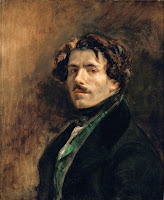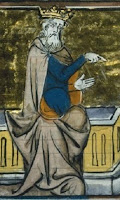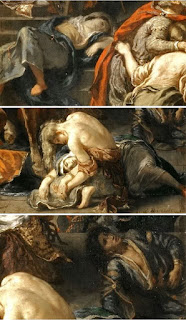The Entry of the Crusaders in Constantinople, Delacroix
 |
| Self-Portrait by Eugène Delacroix (1837) |
Thus, the painting is a
bridge between former art styles and contemporary art of the period in 19th
Century, France. Contrary to Delacroix’s most famous painting of Lady Liberty
on the Barricades, The Entry of the Crusaders in Constantinople was a proper
subject to paint on a large canvas as a historical event, due to the Academy of
Fine Arts. Although the famous canvas painting, which is the subject of the 1830 Revolution, is known as Delacroix’s most known artwork, the artist managed to stay in harmony with the academic community with works such as The Entry of the Crusaders in Constantinople in the following years of his art career.
Historical Context for the Entry of the Crusaders in Constantinople
 |
| Coronation of Baldwin I in Hagia Sophia (1204) |
 |
| The Entry of the Crusaders in Constantinople Detail of Baldwin I |
The Entry of the Crusaders in Constantinople Analysis
 |
| The Entry of the Crusaders in Constantinople Detail of Wearied Figures |
 |
| Liberty Leading the People Detail of Hector alike Man |
The Entry of the Crusaders in Constantinople Historical References
 |
| The Wedding Feast at Cana by Paolo Veronese (1563) |
The Entry of the Crusaders in Constantinople Legacy
 |
| Orphan Girl at the Cemetery Eugène Delacroix (1823-1824) |
The Entry of the Crusaders in Constantinople by Eugène Delacroix
 Reviewed by Articonog
on
January 31, 2022
Rating:
Reviewed by Articonog
on
January 31, 2022
Rating:
 Reviewed by Articonog
on
January 31, 2022
Rating:
Reviewed by Articonog
on
January 31, 2022
Rating:






No comments: